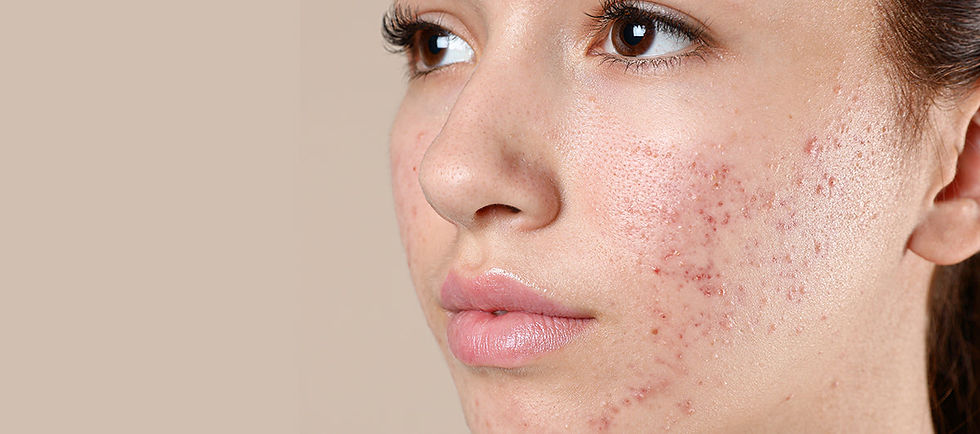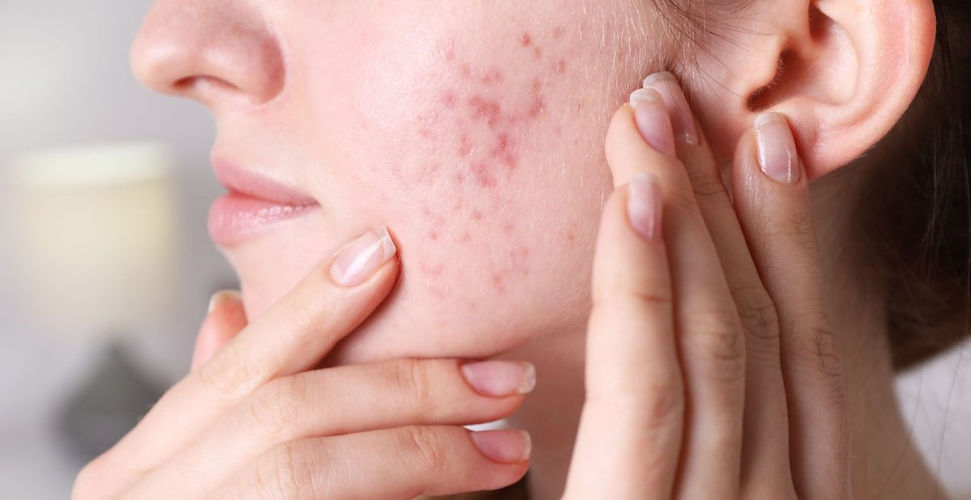ACNE
Acne is one of the most common dermatological conditions, affecting millions of people worldwide. It is a chronic, inflammatory skin condition that results in the formation of pimples, blackheads, whiteheads, and sometimes cysts or nodules. While acne primarily affects teenagers during puberty, it can persist into adulthood and even develop for the first time in later years. Understanding acne's causes, types, treatment options, and psychological impact is crucial for effective management and prevention.

ACNE
Acne develops when hair follicles, or pores, become clogged with oil (sebum) and dead skin cells. This blockage can lead to the growth of bacteria, particularly Propionibacterium acnes (P. acnes), causing inflammation. The main factors contributing to acne include:
Hormonal Changes: Androgens, hormones that increase during puberty, cause the sebaceous glands to enlarge and produce more oil. Hormonal fluctuations during menstruation, pregnancy, or starting/stopping birth control pills can also trigger acne.
Excess Sebum Production: Overproduction of sebum by the sebaceous glands can lead to clogged pores, creating an environment where bacteria can thrive.
Dead Skin Cells: When dead skin cells accumulate in the hair follicles, they can combine with excess oil, forming a blockage.
Bacteria: The presence of P. acnes bacteria in the clogged pores leads to infection and inflammation, causing red, swollen pimples.
Lifestyle Factors: Diet, stress, certain medications, and the use of oily or greasy cosmetics can contribute to acne flare-ups.
TYPES OF ACNE
Acne manifests in several forms, ranging from mild to severe:
-
Whiteheads: Small, closed, clogged pores that appear as white bumps on the skin.
-
Blackheads: Open clogged pores that appear black due to the oxidation of trapped sebum and dead skin cells.
-
Papules: Small, red, raised bumps that result from inflamed or infected hair follicles.
-
Pustules: Red pimples with a white or yellow centre, indicating the presence of pus.
-
Nodules: Large, painful, solid lumps beneath the surface of the skin, caused by severe inflammation.
-
Cysts: Deep, painful, pus-filled lesions that can lead to scarring.

PREVENTION AND MAINTENANCE
Preventing acne involves maintaining a consistent skincare routine and making certain lifestyle adjustments:
-
Daily Skincare: Use non-comedogenic (won’t clog pores) skincare products, and cleanse the skin twice daily with a gentle cleanser to remove excess oil and dirt.
-
Healthy Diet: Some studies suggest that a diet high in processed sugars, dairy products, or high-glycemic foods may contribute to acne. A balanced diet rich in fruits, vegetables, whole grains, and lean proteins is recommended.
-
Stress Management: Stress can exacerbate acne by triggering hormone production, so managing stress through exercise, meditation, or relaxation techniques can be beneficial.
-
Avoid Picking or Squeezing Pimples: This can lead to scarring and worsen inflammation.













